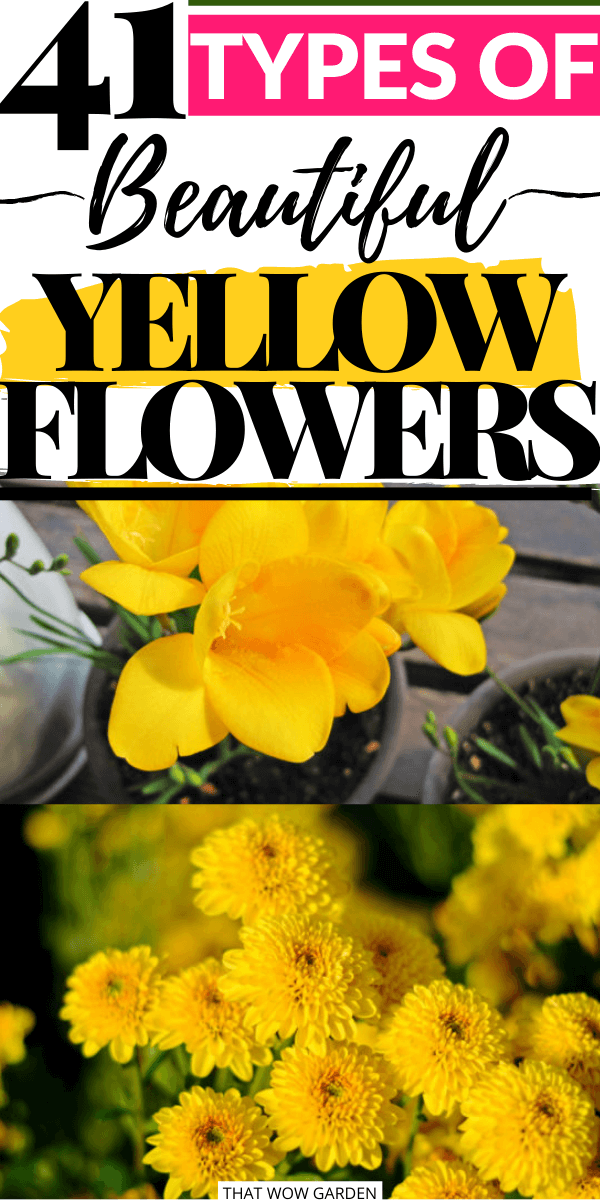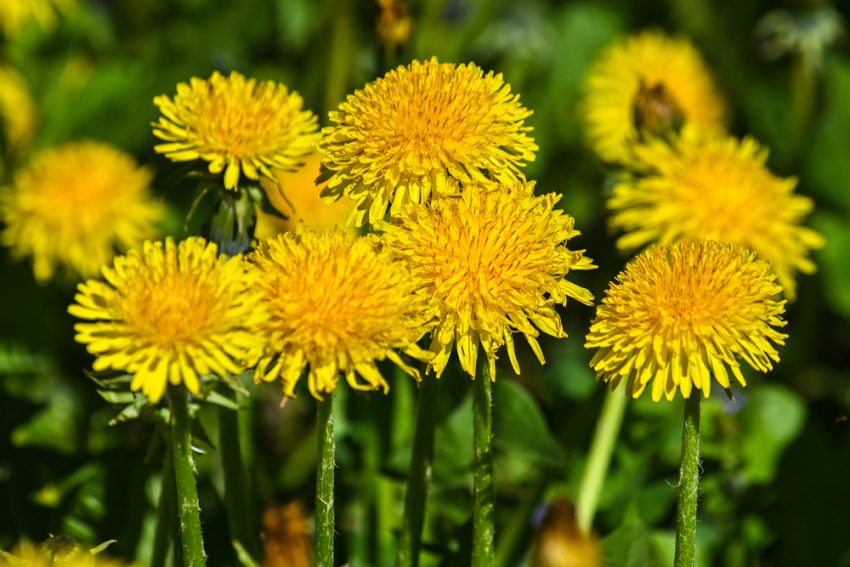Yellow is the brightest, most lively warm color out there. It represents happiness, sunshine, warmth, optimism, joy, energy, and what not – basically, everything GOOD. Mix that with flowers, perhaps one of the most beautiful creations of Mother Earth, and we promise the result will be anything but bad.
Pay attention, our dear gardeners. An ideal yard is the kind full of pretty, colorful flowers that possess the power to uplift your mood real quick at just one glance, right? This is exactly where yellow flowers come in. If you don’t have them, add them to your collection (now!), let the color of the sun work its magic into your mood and the environment, and experience it yourself.
The refreshing, energetic effect they will create will definitely be worth the effort, and unmatchable – other colors just won’t cut it, because yellow, is yellow. It’s zest in disguise, and easy on the eyes.
Here are 41 types of yellow flowers you can plant in your garden to gratify your inner aesthete.
41 Types of Yellow Flowers
1. Sunflower
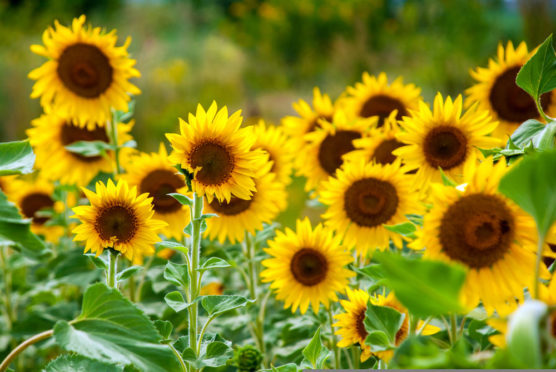
As the name suggests, sunflowers ‘chase the light’, or turn according to the sun’s direction. A sunflower might probably be the first image that pops up in your mind when you think of yellow flowers. This is because they are quite famous as cut flowers and often used in floral arrangements.
They are big in size, with a brown center, and look similar to daisies. They are the easiest one of all the flowers to grow in the garden and need a little amount of care upon starting growth, along with well-drained soil.
2. Chrysanthemum
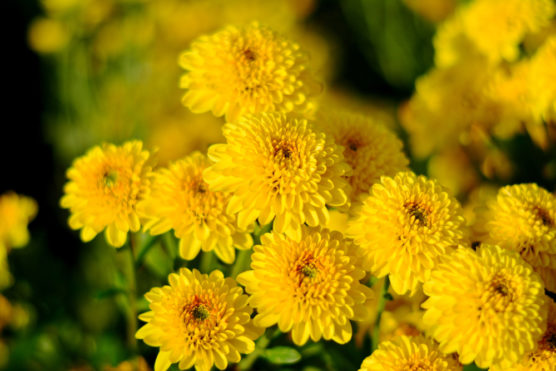
They are commonly called ‘mums’, and are one of the most popular garden flowers. They come in different sizes, color, and height. You can even choose them according to their time of bloom. They need well-drained soil with regular moisture.
To stop the plant from growing into two new stems, a caring technique called ‘pinching’ is carried out, where the main stem responsible for the two stems is removed. Mums are hardy (arent all ‘mums’ hardy?) and love the sun – the more sunlight they get, the more they bloom.
3. Marigold
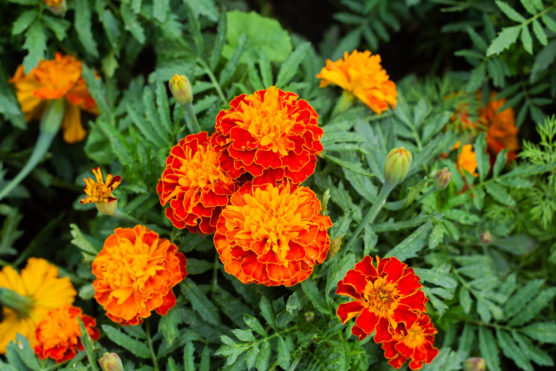
Marigolds are low maintenance annuals which on top of adding joy to your garden will also attract insects like butterflies, bees, ladybugs, and other beneficial insects.
Their germination takes place in a matter of days following which they bloom within about 8 weeks. They look like carnations with many layers of ruffled petals. They need well-drained soil and full sun. Still, they can grow in any kind of soil but require A LOT of sunshine.
They are a great addition to your vegetable garden as they help protect your greens from pests. Keep in mind to water the base instead of the overhead, and wait for the soil to dry before you repeat watering.
4. Yellow Rose
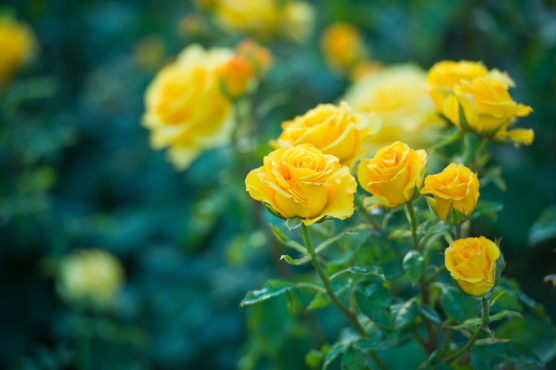
All roses ooze with elegance, so imagine what yellow roses can do to your garden. They have over 2000 varieties and have been cultivated for years. Modern roses are said to have more varieties of color as compared to old roses, which are more fragrant.
Old roses also have more complicated blooms and increased resistance to diseases. Roses signify romance, and yellow roses are said to symbolize friendship, appreciation, and devotion. They need moist, well-drained soil and full sun to thrive.
5. Hellebores
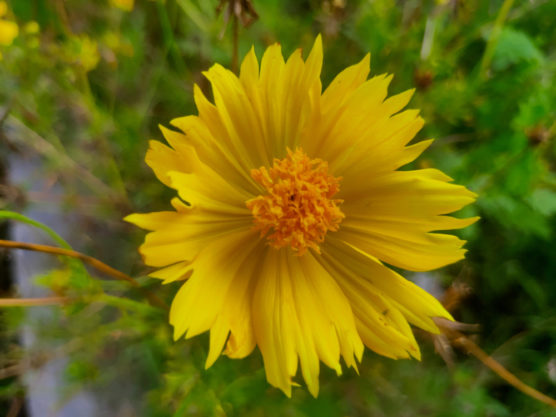
These flowers have leathery leaves surrounding a cluster of tiny stamen like petals. Their foliage is evergreen except for cold regions. Their blooming period is longer than other flowers which lasts between 6 to 8 weeks. They require well-drained soil and either full sun or partial shade.
They must not be planted too deep into the soil, only the crown needs to be immersed in it. Since they are perennials, they will bloom year after year. Keep in mind to shear their leathery foliage in winters for the best look right before the emergence of the new growth.
6. Yellow Lilies
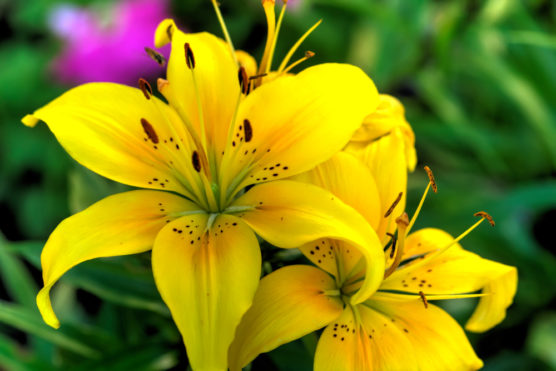
Lillies have a delightful fragrance, and their six petals are shaped like trumpets that sit on top of a long stem. They are popularly used for flower arrangements because of the petals’ bloomy appearance. They need a cold and dormant period to grow in the spring season.
7. Calla Lillies
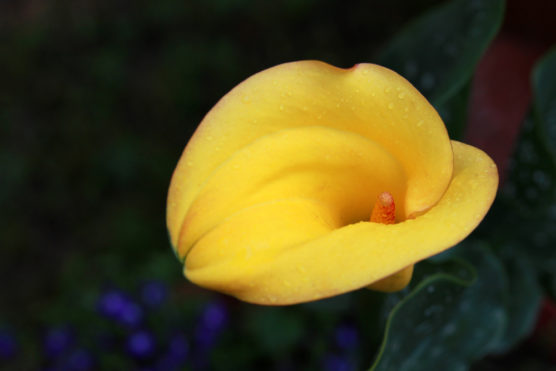
Calla lilies have a beautiful bell shape with minimal petals and are classy and exotic in appearance. They are a great choice as houseplants and can grow outside as well. They need moist, well-drained soil and either full sun or partial shade. Keep in mind to plant them deep and regularly water them. Apart from that, they are low maintenance and you won’t have to bother much.
8. Tulips
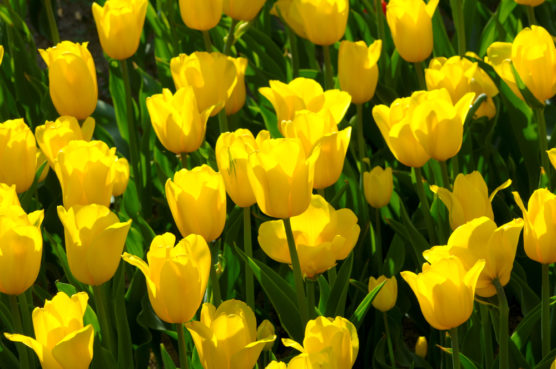
Tulips have a simple cup shape and the petals sit on top of a thin green stem. They effortlessly look simple and beautiful, grow well in well-drained soil, need either full sun or partial shade, and are not fond of excessive moisture. So, make a note to not water the bed where your tulips are planted on purpose.
9. Carnations
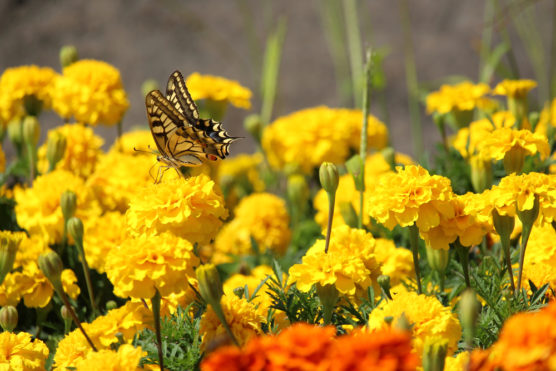
They come in a huge variety of colors and have a full bloom with a cluster of small petals on a long and thin stem. They need moist and well-drained soil along with either partial shade or full sun to grow well. Keep removing wilted flowers to ensure consistent blooming.
10. Gerbera Daisy
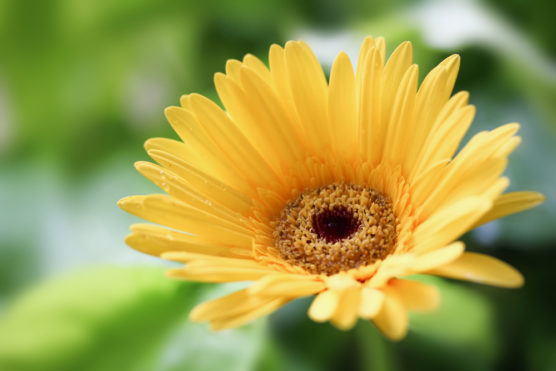
These kind of look like sunflowers with different sized petals and come in a variety of colors. They can be anywhere between 2 to 5 inches in diameter. They require well-drained soil along with full sun to develop. Keep in mind to not plant the crown too deep or it will lead to crown rot which is highly prevalent among daisies.
11. Daffodil
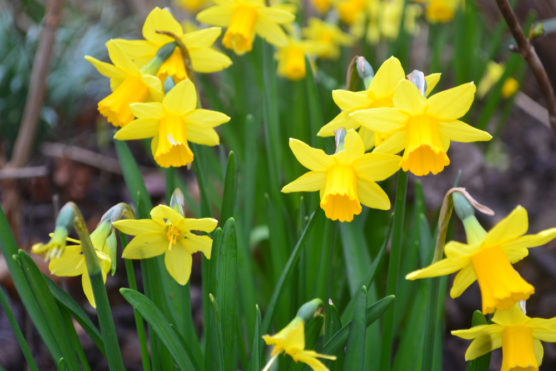
Daffodils consist of two structures – a trumpet-like arrangement of petals in the middle against a background of petals in a star-shaped arrangement. Often, these two come in contrasting colors. It is believed that they symbolize friendship.
They need well-drained soil and full sun. Keep in mind to plant them 3 times deeper in the ground than the original bulb height to prevent bending after blooming.
12. Yarrow
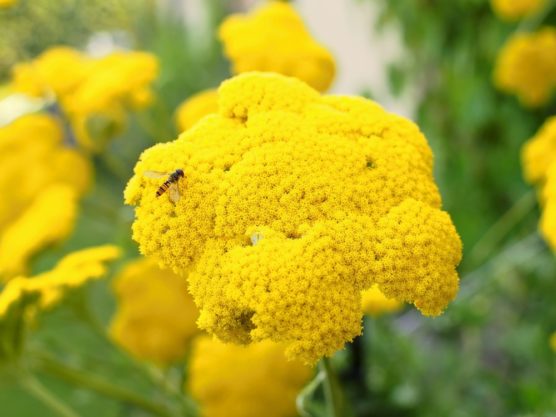
Yarrow is a hardy, perennial flower with fern-like leaves. The flower heads have a cluster of tiny blooms that come in yellow or white color. They need well-drained soil and full sun exposure to grow. Keep in mind to provide them with enough space to grow while planting, because they spread fast and turn invasive.
13. Hibiscus
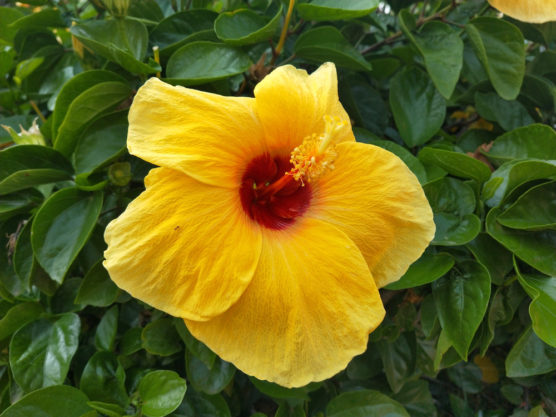
These tropical flowers grow on a small tree and have huge trumpet-shaped petals spread out in full bloom with dark green leaves. They require moist, well-drained soil along with full sun or partial shade and can’t survive in both drought and cold. Hibiscuses also need to be kept constantly moist and must be protected against temperatures below freezing.
14. Freesia
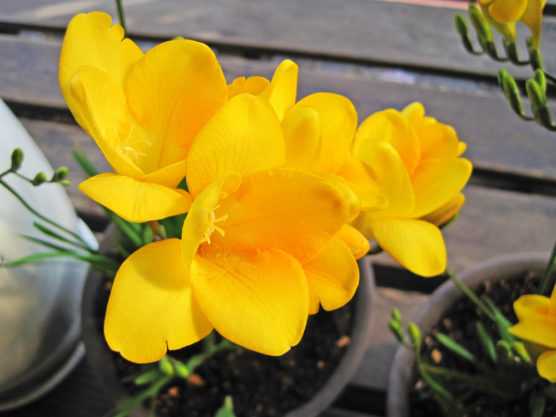
Freesia is zygomorphic – meaning it can grow in a single plane, along one side of the stem. The flowers bloom along the stalk’s topside and face upwards. These fragrant, trumpet-shaped blooms are a great choice as cut flowers because they last longer.
They need full sun to flourish and must be exposed to sunlight for at least up to 8 hours a day. They require well-draining soil and must be planted in fall for warmer climates, as opposed to cold regions where they should be planted in spring after the passing of frost.
15. Zinnia
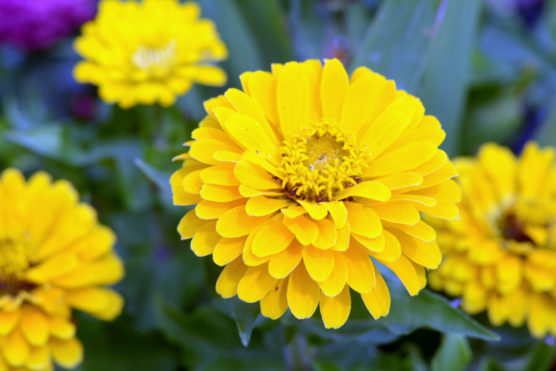
These look like daisies but the petals have straight ends and sit on top of a long stem. They can grow up to 3 feet tall and bloom throughout the year. They need well-drained soil along with full sun to develop and are easier to grow as compared to other flowers. Don’t fertilize them too much and remove dead flowers to ensure proper, continued flowering.
16. Begonia
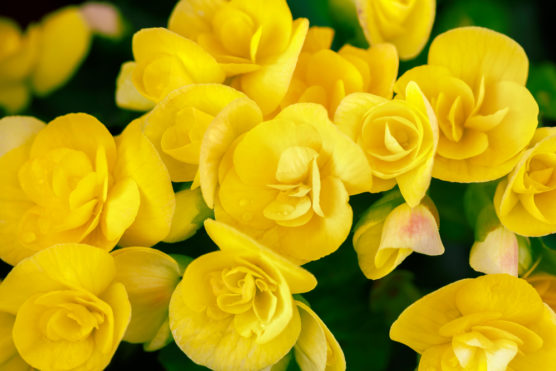
These come in many different varieties and have large double flowers that come in a range of colors like orange, red, white, pink, and obviously yellow. They have dark green leaves. They need moist, well-drained soil and full sun or partial shade. Begonias need a limited amount of sun and dislike wind. Do not water them too much, just enough to keep the soil moist.
17. Bulbous Buttercup
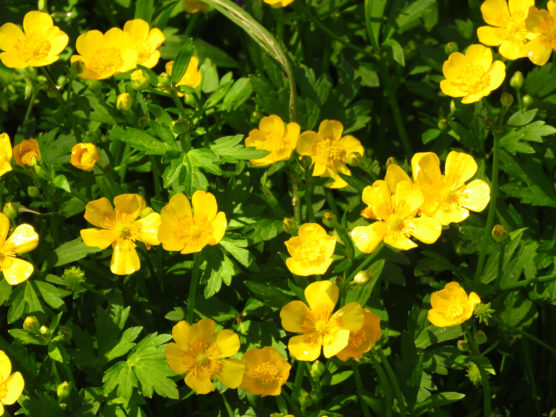
Bulbous buttercup is a perennial bush and the flowers grow from a bulb-like corm – a swollen underground stem. Its height varies from 10 – 30 com. It likes well-drained soil with poor nutrients and becomes established where fresh soil is exposed and finds it hard to compete with taller, established plants.
18. Yellow Butterfly Bush
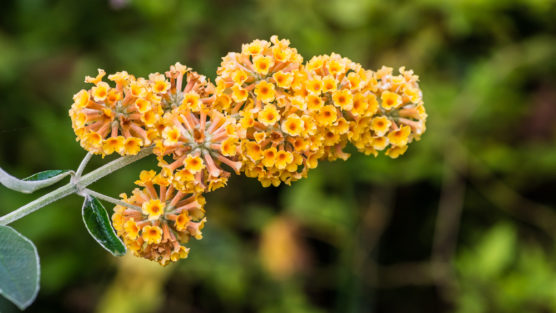
This flower has lance-shaped leaves with branches that bend. It is highly fragrant and attracts hummingbirds and butterflies – as the name suggests. They need well-drained soil and full sun to grow well. This plant can turn into a tree with rough trunks when in milder climates. In cold climates, use fertilizers generously to ensure their health.
19. Bulbine
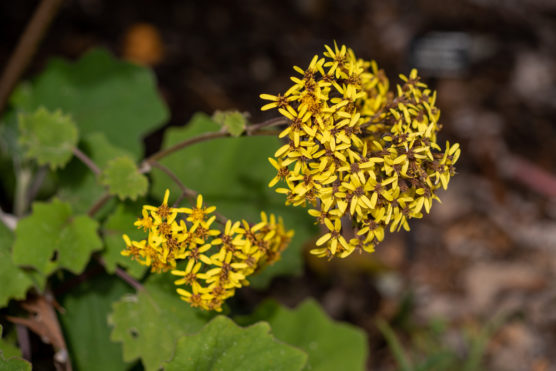
It is a succulent that comes in yellow and orange colors. These can grow up to 2 feet tall, have grass-like foliage, and appear in clumps. They need well-drained soil and full sun to develop. They are the perfect choice for the Florida climate. Keep in mind to regularly pick out dead flowers for more blooms.
20. Jessamine
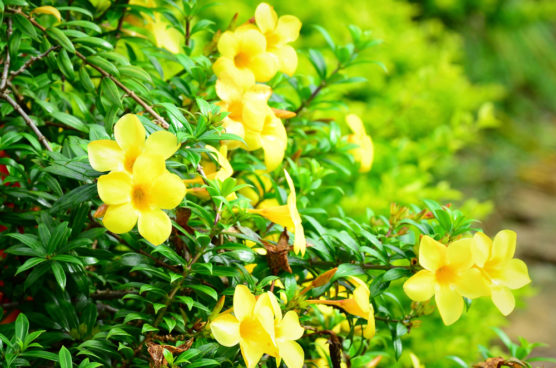
Yellow Jessamine is a vine with funnel-shaped flowers. It blooms early and looks amazing over walls and fences. It needs moist and well-drained soil along with full sun or partial shade. Make sure you don’t let it be in a too hot, or too dry condition. Water regularly and give support once it starts growing long.
21. Dutch Hyacinth
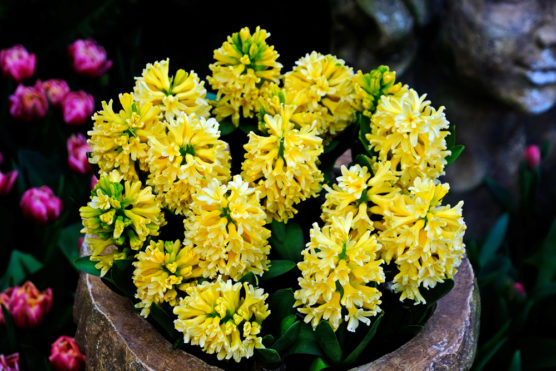
This appears as a ball-shaped cluster of about 20 individual flowers that sit on a thin stem. It blooms from a spring flowering bulb and needs well-drained soil along with full sun or partial shade. Hyacinth can efficiently withstand drought and hence is great for xeriscaping. Wild Hyacinths grow amazingly well with minimal care and protection.
22. Waterlily
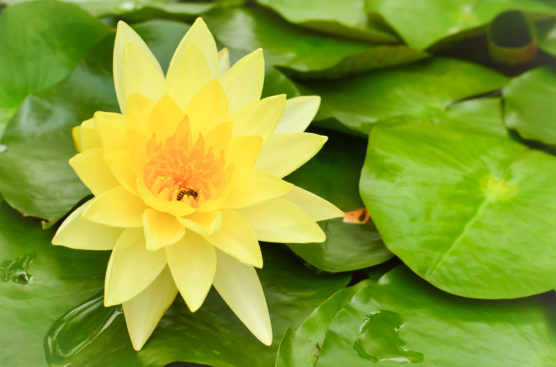
As the name suggests, these grow in water and are one of the tough guys in the world of flowers as opposed to their delicate appearance. You can plant them in a small tub or a pond. They also come in all colors except for blue and purple. While planting, remove their thick roots and old leaves. Plant the tuber with support from an edge and direct the growing tip upwards.
23. Daisy
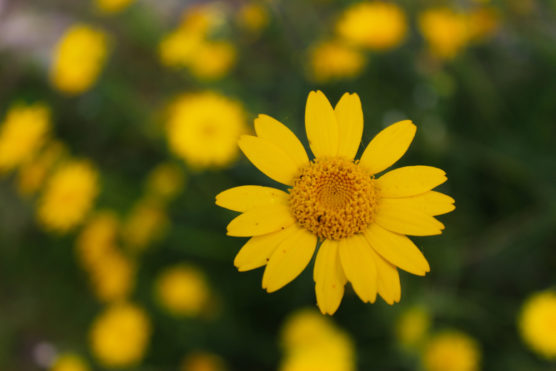
These are different from Gerbera Daisies. They usually are made of white petals with a yellow center and have no leaves on their stem. Daisies come in a variety of colors and need full sun and must be planted between early to mid-spring.
Ranging from 8 inches to 7 feet tall, these cute flowers need a moderate amount of care and dislike soggy soils, and can withstand drought upon proper establishment.
24. Daylily
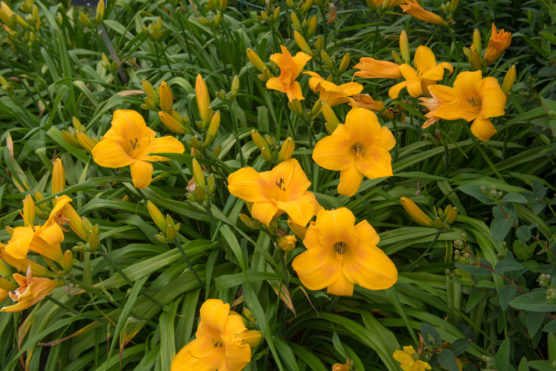
Don’t go on their delicate appearance, because daylilies grow with great ease. They are trumpet-shaped and sit on top of a long, leafless stem. There are umpteen numbers of hybrids of daylilies and which come in a huge variety of colors.
They need well-drained soil along with either full sun or partial shade to thrive. These flowers last for a day and live up to their name. What more, you don’t even have to water them daylily! (Pun intended)
25. Coreopsis
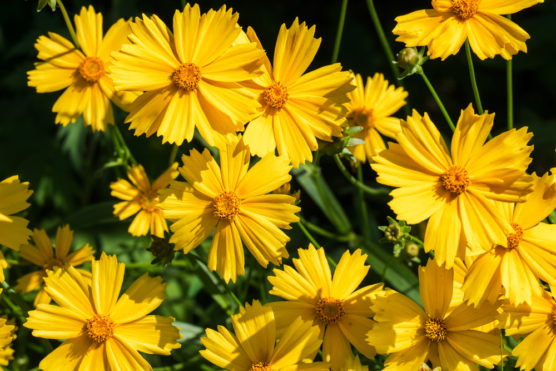
These perennial flowers look like daisies and come in varying shades of pink and yellow. They need well-draining sandy soil and full sun to thrive, although they can survive in partial sun as well. Don’t forget to remove the wilted flowers for better growth.
Their size differs with varying species, growing conditions, and age. They usually grow in clumps, and some varieties can self sow through your garden. A few can also be spread by runners. Although the plants are hard, they don’t live more than three to five years.
26. Goldenrod
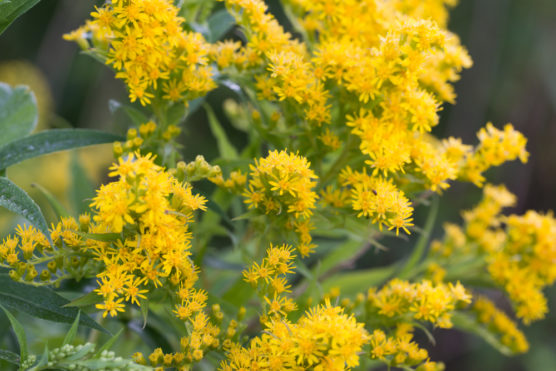
Goldenrod is a wildflower that grows all year long and has tall stalks full of leaves. It is a deep yellow in color and starts to bloom in late summers. It needs well-drained soil along with either full sun or partial shade to thrive. As these grow fast and can become invasive, choose a hybrid version that is shorter.
27. Pansy
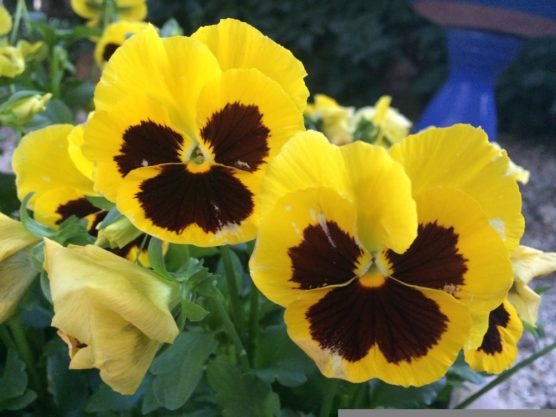
These perennial flowers can bloom in any season and come in a huge variety of colors. They are great for borders and ground covers because of their tough nature. They need moist, well-drained soil along with full sun. Keep in mind to water them daily, or drought will lead to their fall quick.
28. Prickly Pear
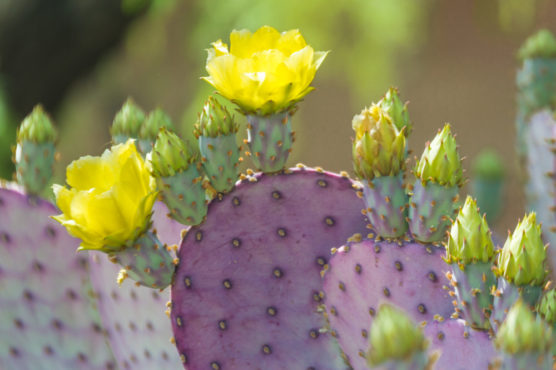
This cactus is very adaptive by nature. You can find it growing in southern and northern states both. It has flat green (and obviously thorny) pads that protrude in different directions. Do not plant these near pathways as it has the ability to grow large. If you don’t wish to use a pot for planting, make a mix of half soil and half sand.
29. Black-Eyed Susan
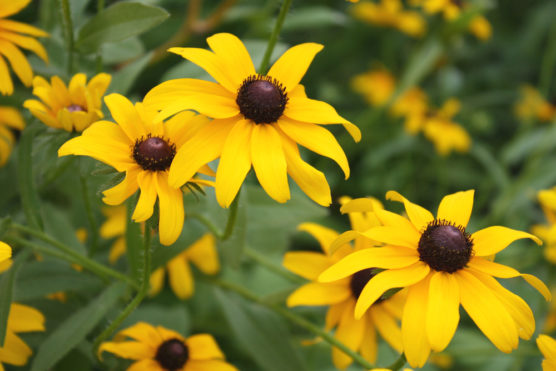
These are very similar to sunflowers and daisies appearance-wise and have dark brown centers. They blend well with perennials and shrubs and need moist, well-drained soil to grow along with either full sun or partial shade. They need a significant amount of moisture to grow despite being highly adaptable. Keep in mind to plant them along with shrubs if you choose the tall kind.
30. Primrose
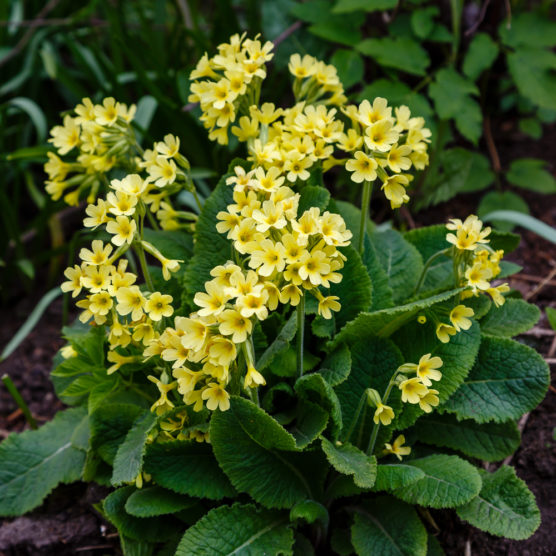
This flower is shaped like a goblet with a red star-shaped outline surrounding the center. It has a strong fragrance and comes in white, pink, and yellow. It needs well-drained soil along with the full sun to thrive. They spread fast, so make sure to keep them in control.
31. Iris
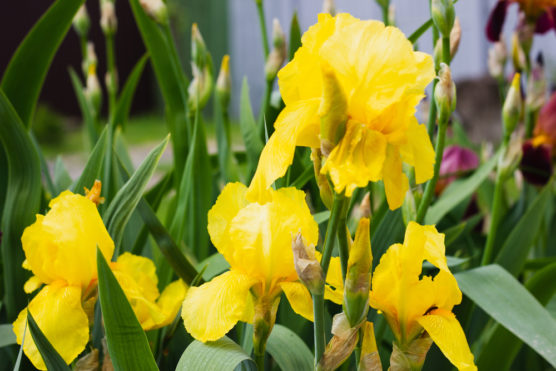
These have three upright and three drooping petals that come in contrasting colors. They have delicate bottoms that come in a variety of colors. You can find them in shades of purple, orange, pink, blue, and white apart from yellow. They need well-drained soil along with either full sun or partial shade. Some of these flowers prefer acidic soil, and some prefer alkaline soil.
32. Craspedia
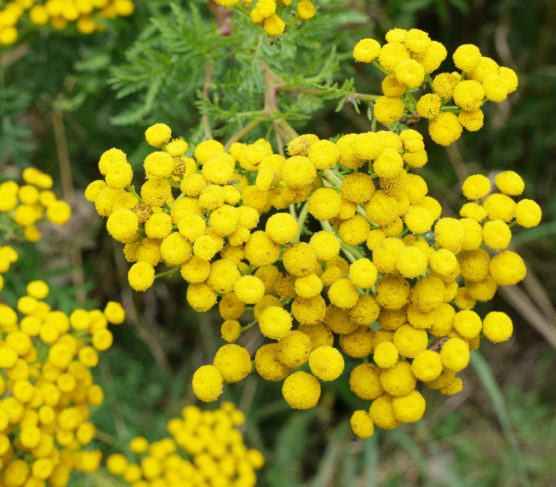
These have exact ball-shaped flowers that can reach the size of a tennis ball. These are perennial and bloom in warm climates. For proper growth, they need well-drained soil along with full sun.
If you’re looking for low maintenance blooms, these are just the ones for you. These can thrive in any soil type and need minimal watering. They also don’t need fertilizers as they are mostly pest and disease resistant.
33. Snapdragon
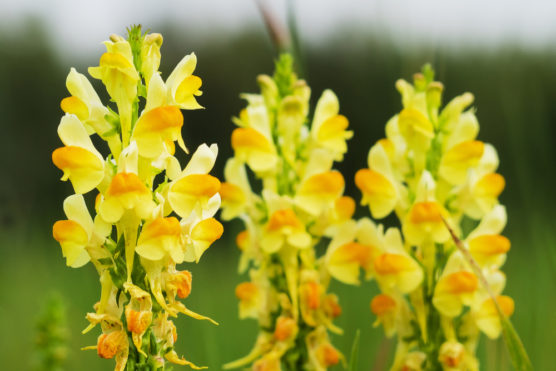
These are medium-sized and come in a number of colors aside from blue. You can grow them with short and tall plants to provide support and balance. They require well-drained soil and full sun for better growth. They can handle frost and hence can be planted early. Clip the stem at the top and the side shoots in the blooming season to facilitate growth.
33. Creeping Buttercup
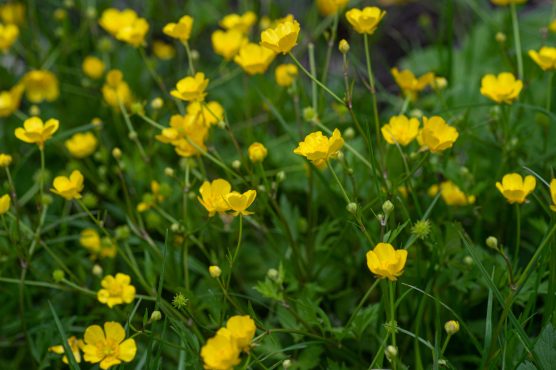
This plant is considered a weed and is a perennial that is short in height. It has creeping stolons and can be found in rural and urban areas both throughout king county. The stems are usually one foot tall with dark green leaves and both are kind of hairy. It is a toxic plant for grazing animals as it’s aggressive in nature. The flowers are glassy in appearance with five to ten petals.
34. Dahlia
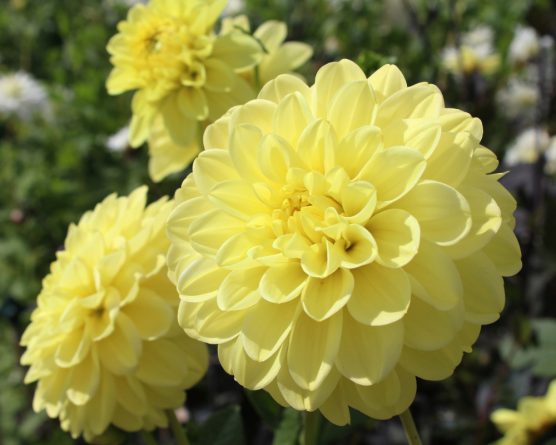
Dahlia is a member of the same species as sunflower, daisy, chrysanthemum, and zinnia. The tubers are planted at the end of spring. They prefer moist, moderate climates and are not made for hot climates. They need well-drained soil and full sun.
Keep in mind to plant them in a location protected from the wind. Do not water them until the plants start to appear since overwatering can cause rot in the tubers. The more you cut them, the more they will bloom, so they are a great choice as cut flowers.
35. Yellow Cestrum
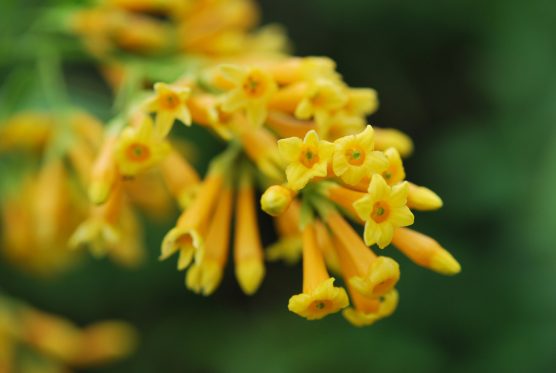
This is a hardy plant that you can grow as a small multi-trunk tree 10 ft high or a large shrub. After dark, the tubular flowers develop a very faint citrus scent and are not very fragrant. It flowers continuously all year long at the branches’ tips. It needs either full sun or partial shade and attracts butterflies, so it’s a great choice if you want your garden to look lively.
36. Lesser Celandine
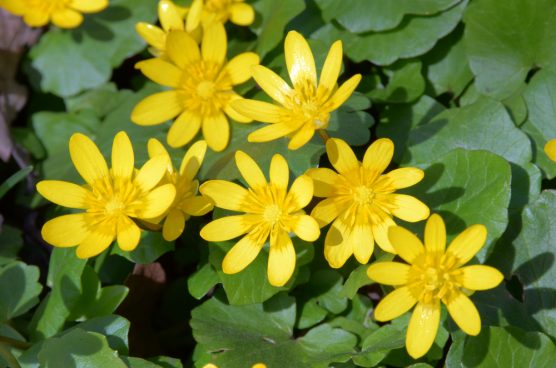
This plant has glossy dark green leaves and bright petals, but the best part is that it can grow in any condition from full sun to full shade. It is best suited for moist soils but can also survive in areas where water and nutrients are in scarcity.
Celadine is short – about 11 inches tall and falls among one the plants that emerge in the spring season, which makes it a great choice for your garden. Keep in mind that it is also an invasive plant and so aggressive that other trivial native plants cant even compete with it.
37. Bear’s Ear
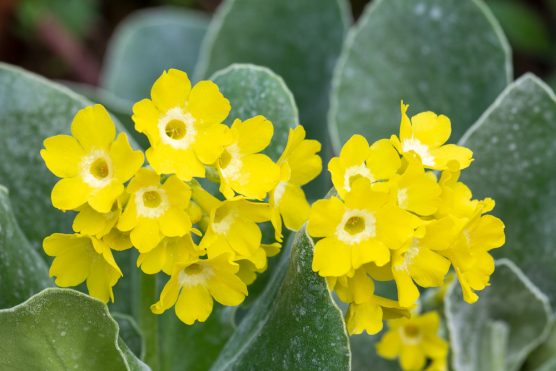
These plants are evergreen perennials that prefer a cold climate but not a lot of moisture and sun. This is why they are grown in shelters away from the sunlight.
They can grow up to 8 inches tall and 10 inches wide. These flowers grow in clusters on 2 to 8 inch long stalks. It’s important you protect them against wine weevils, especially in pots. Look out for V-shaped bites on the leaves for better identification.
38. Cowslip
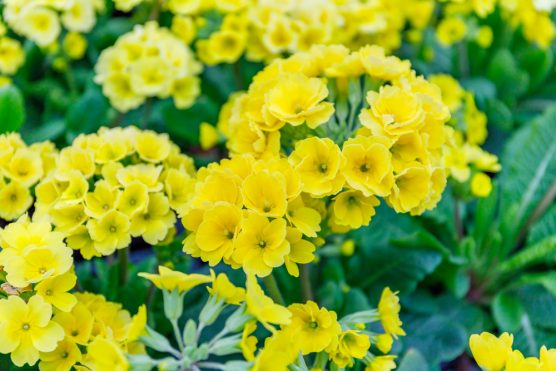
Cowslips are one of the most popular spring flowers and have a flat rosette with wrinkled leaves. The flowers sit on top of long stems, are cup-shaped, and appear as if they’re nodding. These British perennials prefer neutral soil and if planted in a pot will grow best with moisture present.
They can grow easily in sun or shade but need well-drained soil. You can plant them in a natural setting, like an unmown lawn or a wildflower meadow. Keep in mind to sow seeds in late winter or early springs. You can also divide the clumps in spring or autumn.
39. Calendula

This one is commonly known as pot marigold but is different from the regular marigold. This flower has long been used as an ingredient while cooking in British households, and add a flavor similar to that of saffron. All part of the calendula plant can be efficiently used in a number of ways.
Calendula is an annual flowering herb and reseeds easily. They need well-draining soil and minimal watering, that too only after the plants have grown. These are highly flexible and don’t call for a lot of maintenance. You can grow them in full sun or shade conditions. Ideally, they prefer cool temperatures and hence last longer in shady areas or filtered sun.
40. Canna lily
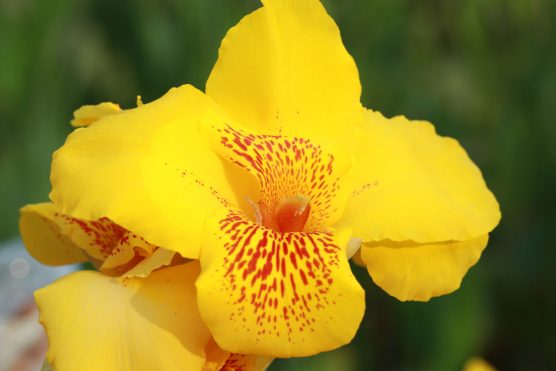
Canna lily is a perennial with large flowers resembling Iris along with tropical-like foliage. They are low maintenance and thrive easily. Moreover, they prefer plenty of heat so it’s best to put them in full sun, although they can also do with partial shade. Cannas are usually grown as annuals in colder climates.
They like moisture but can do with well-draining neutral or slightly acidic soil. Use soil that’s rich in organic matter. After establishment, they require fertilizer with amounts of phosphate for continued bloom. Keep in mind to dig up the rhizomes for storage during fall.
41. Portulaca
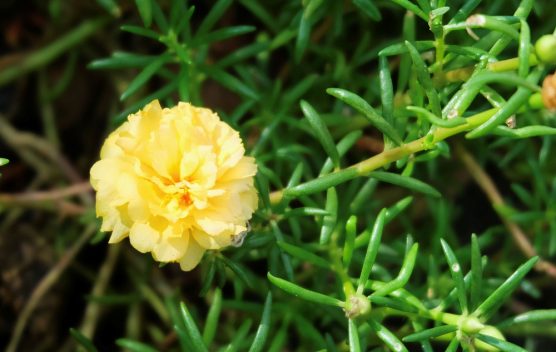
You can grow Portulacas fairly easily, and they are a low growing ground cover type of plants. They can grow in any kind of soil but prefer sandy, well-drained soil along with full sunlight. They can withstand excessive heat and drought, and reseed readily. However, they can become invasive, but you can regulate this using control methods.
You don’t have to water them often because of their cylindrical foliage, which retains water efficiently. When they are watered, light watering is enough because of their shallow root zone. These beautiful flowers attract butterflies and are hardy by nature. So, you don’t need to worry much, they will do their thing just right and adorn your garden.
Well, there are so many flowers that’ll add a warm, sunny feel to your garden. Choose the ones you like and get started! Happy Gardening.

